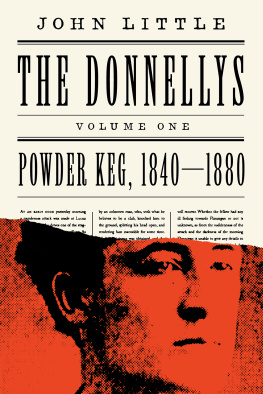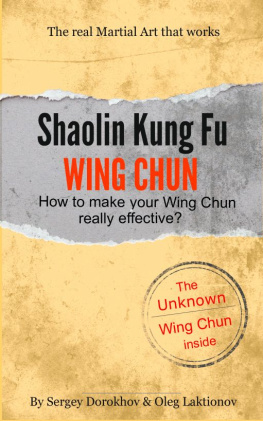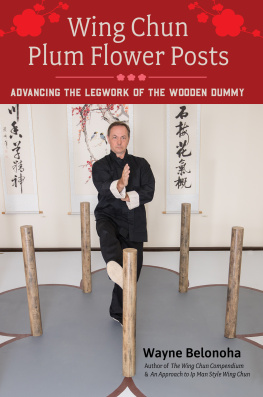Copyright 2015 by Danny Xuan and John Little
All rights reserved. No part of this book may be reproduced in any manner without the express written consent of the publisher, except in the case of brief excerpts in critical reviews or articles. All inquiries should be addressed to Skyhorse Publishing, 307 West 36th Street, 11th Floor, New York, NY 10018.
Skyhorse Publishing books may be purchased in bulk at special discounts for sales promotion, corporate gifts, fund-raising, or educational purposes. Special editions can also be created to specifications. For details, contact the Special Sales Department, Skyhorse Publishing, 307 West 36th Street, 11th Floor, New York, NY 10018 or .
Skyhorse and Skyhorse Publishing are registered trademarks of Skyhorse Publishing, Inc., a Delaware corporation.
Visit our website at www.skyhorsepublishing.com.
10 9 8 7 6 5 4 3 2 1
Library of Congress Cataloging-in-Publication Data is available on file.
Cover design by Qualcom Design
Cover illustration: Dong Jinwen ( ) and Danny Xuan
) and Danny Xuan
ISBN: 978-1-62914-777-2
Ebook ISBN: 978-1-63220-995-5
Printed in China.
C ONTENTS
P REFACE
L IKE MANY WHO ARE familiar with Wing Chun, my journey to the art came via Bruce Lee. Having seen Lees films in the 1970s, millions of international fans were won over by his lithe grace and charisma, and we wanted to learn more about what he had demonstrated on the big screen. During the course of our research we learned that what Lee had practiced was his own martial creation, which he termed Jeet Kune Do, or The Way of the Intercepting Fist. To better understand the man, we reasoned, we had better understand his art.
Unlike today, in 1973 (the year that Lee died) there wasnt anybody teaching his art. Evidently Lee had closed all three of his formal schools several years before returning to Hong Kong to focus on making the movies that would justifiably bring him international and enduring fame. Those who had assisted him in his instruction at these schools had, in an effort to both honor his memory and to preserve his art, started teaching small groups of individuals and/or teaching privately, but you had to live in either Washington or California to have access to them. As I lived in a small suburb in Ontario, Canada, such personal instruction simply wasnt going to happen. The next best thing to personal instruction from a knowledgeable teacher was self-education through studying Lees surviving writings on his approach to martial art and its underlying philosophy, and then reinforcing his written words by re-watching his films with an eye toward more carefully examining the techniques he employed, as well as the movements and postures he made. This sustained us at the time and taught us much about Lees approach to martial art and, as ancillary, the Chinese martial arts in general, for many years.
Almost immediately we learned that in his youth Lee had studied a Chinese martial art called Wing Chun under the tutelage of a master by the name of Yip Man (the name would be changed to Ip Man several decades later) and one of Ip Mans senior students (and the clans best fighter) Wong Shun Leung. When Lee wrote about Wing Chun and Ip Man he did so with great respect. In an article profiling the young martial artist in Black Belt magazine in 1967, Lee is quoted as saying, I owe my achievement to my previous training in the Wing Chun style. A great style.
According to Lees earliest students in America, such as Jesse Glover, Ed Hart, and Taky Kimura, no small portion of the principles, training methods, techniques, and philosophy that Lee employed came directly from the art of Wing Chun. That the man generally considered to be the greatest martial artist of the twentieth century should hold the art in such high regard won many of us over to it simply by default. Few of us, however, really understood the depth and breadth of the art, which was greater than we could have fathomed.
Fast forwarding to 2009, I found myself in Hong Kong working on a film about the locations that appeared in Lees films, where I had the opportunity to meet the eldest son of Bruce Lees teacher, the then 86-year old Ip Chun, who told me stories of his late father (who was then the subject of two feature films), the principles of the art his father taught, and how diligently the young Bruce Lee had practiced it. I resolved then that I would take up the study of the art upon my return to Canada and began immediately looking for a suitable instructor. Being older and having been involved heavily in the martial arts world at this point for thirty-some years, I had seen manytoo manyfractured egos and self-professed masters in the various arts, and, sadly, Wing Chun seemed to me to be an art that was burdened by more than its fair share of such people. And, unfortunately for me, the nearest instruction of any substance in Wing Chun was still hundreds of miles away from where I lived. The next best thing, I reasoned, was to learn from a competent instructor on-line. After all, we were then well into the Internet age, the era of the information Super Highway, and anyone, anywhere was by some means accessible. This was how I first met Danny Xuan through his web page. Here at once was a man who downplayed his significance in the art (which was a surprising and refreshing change of pace), and yet wrote about it with such a passion and a depth of knowledge that I hadnt experienced since reading Lees own writings on the martial way many decades earlier.
Xuan approaches his art like Lao-tzu approached nature; looking for and revealing the Tao, or underlying way of things in relation to human combat, much as Lao-tzu had sought to reveal it in every wave, bending branch and twinkling star. Xuans insights were deceptively simple, which I have come to learn, is a hallmark of most truly deep subjects. He spoke of the impartial, impersonal, and yet rational natural law of thingsfrom geometric planes to the nature of force productionto which all things abide in accordance with their true selves or natural natures. From the perspective of the Tao, all of the laws of nature are united and their aggregate is simply reality, in which all natural forces, forms, and structures find their proper place and optimal method of operating and surviving. Apparent contradictions and diversities seem to dissolve before it. It is a means by which one learns to understand, trust, and act in accordance with ways of nature.
There is nothing weaker than water
But none is superior to it in overcoming the hard,
For which there is no substitute.
That weakness overcomes strength
And gentleness overcomes rigidity,
No one does not know;
No one can put into practice.
Although these words sound as though they were written by Bruce Lee (most certainly he adopted them as the cornerstone of his martial philosophy), tradition has it that they were first written by Lao-tzu in the fifth century BCE. And while they do reveal a truth about human combat, they also reveal a larger truth about the reality of the world and how its various elements interact.
Xuan understands this bigger picture and his interpretation of the art of Wing Chun is a product of this understanding. Coming from a traditional background where he was simply taught the methods and postures of the art, he wasnt satisfied and instead of merely continuing on practicing by rote, he retired from running a very successful business on the West Coast of Canada to backpack his way across China. Along the way he would stop in small villages that tourists never see and that are seldom if ever written about, and look more deeply into the culture that had produced his art. But more importantly, he began thinking about his art in a different way, examining every aspect of itfrom its legendary origin, to its fundamental stances, to its forms, to its conceptual underpinnings. At the end of his trek he was a different man with a different and more profound understanding of the art of Wing Chun. It is this understanding that he shares with the ) may well contain the distilled essence of Wing Chun, for as Xuan once told me, This art is also about life. And life is about dealing with forces. And in our lives were always dealing with some kind of force or some kind of conflict, whether it be with, you know, your wife, your brothers, sisters, or your boss in business, theres always some kind of challenges that youre going to have to face. This is perhaps the most technical chapter in the book and, to some, perhaps, intimidating, but like Lao-tzus book, it repays further reading and re-reading.
















 ) and Danny Xuan
) and Danny Xuan